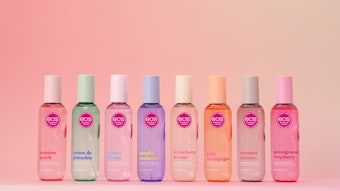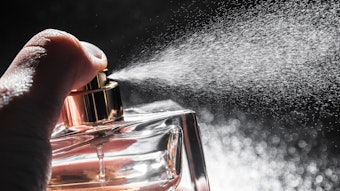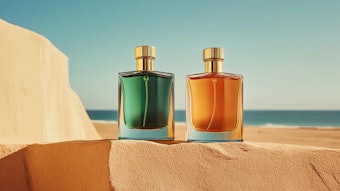“The safety of the people shall be the highest law.”
—Marcus Tullius Cicero
Once upon a time, a bottle of fragrance sent by an eager fragrance supplier sat in the lab. The formulating chemist and development team made a new product, and the fragrance was added. It smelled good, it was stable, and the price was right, so off to market it went. Then another base was created at a later date, and the same process was followed and on and on, whether it was a lotion, eye cream, shampoo or anything else needing a pleasing scent. So the same fragrance oil was used in many different products at different percentages without a thought of regulatory compliance. This, however, hasn’t been the case for quite a long time, but still the nitty-gritty of fragrance guidelines is a mystery to many beauty product developers and marketers.
Adding Fragrance
There are many regulations governing fragrances—they are, after all, mixtures of chemicals. But from the fragrance industry itself comes one fundamental set of guidelines, issued by the International Fragrance Association (IFRA) based on science generated by the Research Institute for Fragrance Materials (RIFM). The levels of safe use are generated by what looks like an algebraic formula, but actually incorporates toxicological complexities of serious proportions:
AEL = WoE NESIL/SAF
Where AEL = Acceptable Exposure Level, WoE = Weight of Evidence, NESIL = No Expected Sensitization Induction Level and SAF = Sensitization Assessment Factor.
If it looks like a formula and all the acronyms are decoded, it should be understandable. But WoE NESIL involves the nuanced approach to toxicology used by RIFM, and nuances are not always easy to grasp by the uninitiated.
RIFM has a huge database (available through subscription) of everything known about the safety of fragrance materials. This database is a monumental achievement and a shining symbol of the industry’s commitment to safety. When assembling the data, sometimes gaps are found, which RIFM fills by additional testing or use of whatever methods are applicable, including computer models and structural analogies.
All this data is placed before an RIFM Expert Panel (REXPAN), a group of independent academics, scientists and physicians from around the world. Their evaluation of a safe use level based on all this information becomes the WoE NESIL, the best estimate for the safe use level for the material. So the safe use level is not a fact like the average distance from the earth to the moon, but an expert consensus on the interpretation of all the available information on a given material.
But toxicologists are wary folks, and it is their wont to increase the safety margin by dividing the calculated safe use level by yet another number, the Safety Assessment Factor, or SAF. One factor takes into account the differences between individuals. Then a factor is assigned to the product matrix, and another to use considerations—for example, the underarm versus the top of the head. Thus if REXPAN concludes a fragrance material with a certain end use is safe at 10%, the final guideline may include an SAF of 100 and specify a maximum use of 0.10%. This final value is the AEL, the fragrance level not expected to induce an allergic response.
This data goes to IFRA, and every two years new amendments are made to the guidelines. This information is not a fragrance industry secret; it is all posted on the IFRA website.1
As an experiment, on the IFRA homepage, click “Standards”, then the “Standards Restricted” tab, and then search for “citral.” This will help illustrate the following example, as it is what it’s based on. For the categories and the details of the quality risk assessment, download the PDF from the RIFM website.2
Table 1, IFRA Fragrance Categories, has a simplified list of the categories, and Table 2, Eau de GCI, a simple perfume formula (not made to smell good but to show a regulatory lesson) with one regulated material—citral. Citral was added directly, and is also a small component in grapefruit oil.
The IFRA limits in finished products for citral show that how much of the fragrance can be used depends on the application. For a hand cream, Category 5, the safe level is 0.3%. With 5.99% directly added to the formula and 0.01% contributed by the grapefruit, the total for citral is 6.00%.
Calculating the acceptable level: 0.30% x 100% /6.00% = 5%
Of course using a fragrance in a hand cream at 5% is extreme, and there is also a “pragmatic limit” for using fragrance. Even if the IFRA calculations result in an allowed fragrance level of 85% in a baby wipe, that is far beyond the pragmatic level and common sense is expected. Pragmatic levels are specifically indicated for Category 8 (2.00%), Category 9 (5%) and Category 10 (2.50%).
A similar procedure is used to calculate allergens, but that is only necessary if a product is going to be sold in the European Union (EU) and only for labeling purposes, not restricting use levels.
Currently there are 26 allergens listed by the EU,3 but these materials don’t always have to appear on the label. If they are in the finished product at less than 0.001% for a leave-on product or less than 0.01% in a rinse-off product, they are exempt from labeling.
Responsible Product Development
If you use a fragrance in your product, you should have an IFRA compliance letter from your supplier, and it should be updated every two years when new amendments are issued. If you ship to the EU, you must have an allergen statement as well. Also, if you do business in California, check to see if any material it contains is regulated by the Safe Cosmetics Act. And if you don’t have these documents, contact your supplier now.
There is a new proposal that may greatly increase the number of allergens and impose restrictions, and even bans, on some materials, but it is uncertain if this more extreme rule will be enacted. Anyone interested in learning more on this can find a formidable 334-page PDF about it, titled Opinion on Fragrance Allergens in Cosmetic Products, online.4
This proposal would adversely affect the vast majority of fine fragrances. For example, Chanel No 5 would have to be changed beyond recognition. The hope is that such a radical regulation will not be imposed on the industry now or in the future. And the work of RIFM and IFRA is a major line of defense against unreasonable regulations.
It is important to know, the IFRA guidelines are but the tip of the iceberg for ensuring safety and regulatory compliance for fragrances. REACH, CARB, the Safe Cosmetics Act, different country standards and even detailed company standards for multinationals all enter the equation. RIFM is currently revamping its criteria to take into account the latest science, using every possible tool to ensure the safety of every fragrance for every application and for every consumer. It is a daunting and never-ending task—and one to which the industry is deeply committed.
References
- www.ifraorg.org
- http://rifm.org/doc/QRAInfoJuly2011.pdf
- www.gcimagazine.com/business/management/regulation/106763708.html
- https://ec.europa.eu/health/scientific_committees/consumer_safety/docs/sccs_o_102.pdf
(All accessed Jan 10, 2013)
Steve Herman is president of Diffusion LLC, a consulting company specializing in regulatory issues, intellectual property, and technology development and transfer. He is a principal in PJS Partners, offering formulation, marketing and technology solutions for the personal care and fragrance industry. He is the New York Society of Cosmetic Chemist’s 2013 chapter chairman and an adjunct professor in the Fairleigh Dickinson University Masters in Cosmetic Science program. He is also a Fellow in the Society of Cosmetic Chemists.












